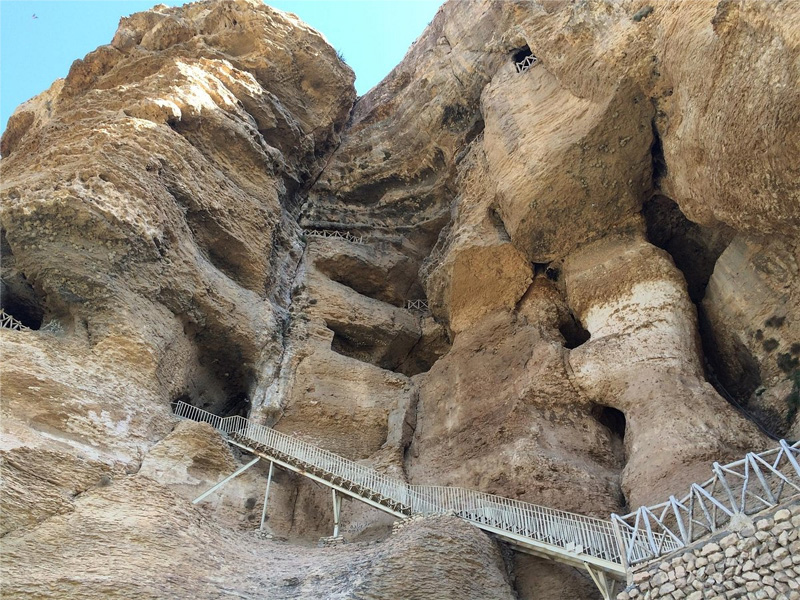For thousands of years, the earliest humans sought refuge in caves to protect themselves from natural hazards, defend against wild animals’ attacks, and cope with temperature fluctuations. This way of life, known as cave-dwelling, was chosen as their place of residence. Even today, due to the protection it offers from social stresses and the opportunity for a healthy life in the embrace of nature, many people still live in caves and consider it a form of meditation for their souls.
Caves of various types can be found all over the world, both natural and man-made, and they differ in size and dimensions. Some caves are so challenging to access that one must be strong and fearless to venture into them. One of the most famous of these caves is the “Karaftu Cave,” which we will describe in this article from Eligasht.
Book Iran Air flights from London to Tehran and Tehran to London with Eligasht UK:
Where is Karaftu Cave located?
Karaftu Cave is situated 70 kilometers northwest of Divandareh in the border province of Kurdistan. This ancient cave dates back to the 3rd century AD and is considered one of the significant rock formations and caves in Iran. While some parts of the cave’s interior may be man-made, all the natural formations within the cave are adorned by the hand of the Creator, providing us with the pleasure of witnessing these natural scenes.
To reach Karaftu Cave, you won’t have to endure any hardships; you only need to traverse a few steps while enjoying nature!
On the way to the cave, there are several winding paths that are still unexplored. As mentioned before, Karaftu Cave is divided into a natural and a man-made section. The man-made section represents the presence of humans in various areas of the cave and is considered one of the most unique and harmonious architectural models in Iran. Karaftu Cave was declared a national heritage site in 1318 (Iranian calendar).
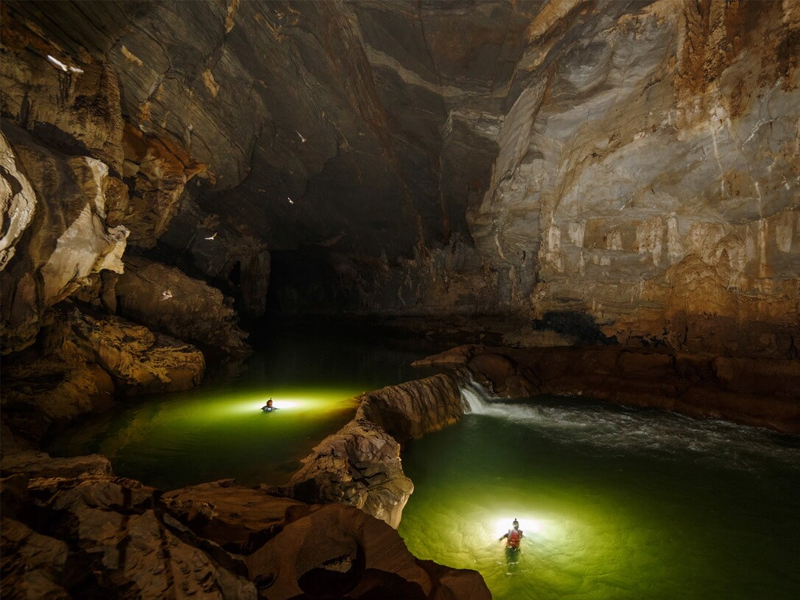
The Age of Karaftu Cave
Researchers have discovered inscriptions from the Karaftu Cave that indicate its connection to the Seleucid, Parthian, Sassanian, and Islamic periods. Other explorations of the Karaftu Cave refer to human habitation during prehistoric times. The Karaftu Cave has been active for nearly a thousand years and has recently resumed its activities.
Related post
The Most Mysterious Caves in Iran
Katale Khor Cave, an Unparalleled Cave in Zanjan
Underground City of Nushabad: The Hidden Wonder in Kashan
Architecture of Karaftu Cave
When you enter the cave, you will see a four-story rocky architectural entrance with slow steps, and numerous rooms arranged in a unique spiral architecture, resembling interconnected tunnels.
It should be noted that the height of the Karaftu Cave entrance is approximately 25 meters, which used to be a difficult and challenging path on the mountain slopes. To guide tourists, ancient relics have been created, including stone steps and wooden stairs, to help nature enthusiasts overcome the difficulties and reach the interior of the cave.
In the past, due to the settlement of various ethnic groups, some encroachments and occupation occurred in the cave, resulting in intricate rooms and winding passages. Therefore, among all the caves in the region, Karaftu Cave is the most famous, and this fame is justified because it captivates every visitor.
How to access the rooms in the cave?
Don’t worry about losing your way to the rooms, as there are corridors and passageways designed for them.
The Karaftu Cave showcases abundant beauty, including charming stone steps that invite you to embark on a journey to another world. By stepping on those stone steps, you can imagine the ancient humans who once walked on them.
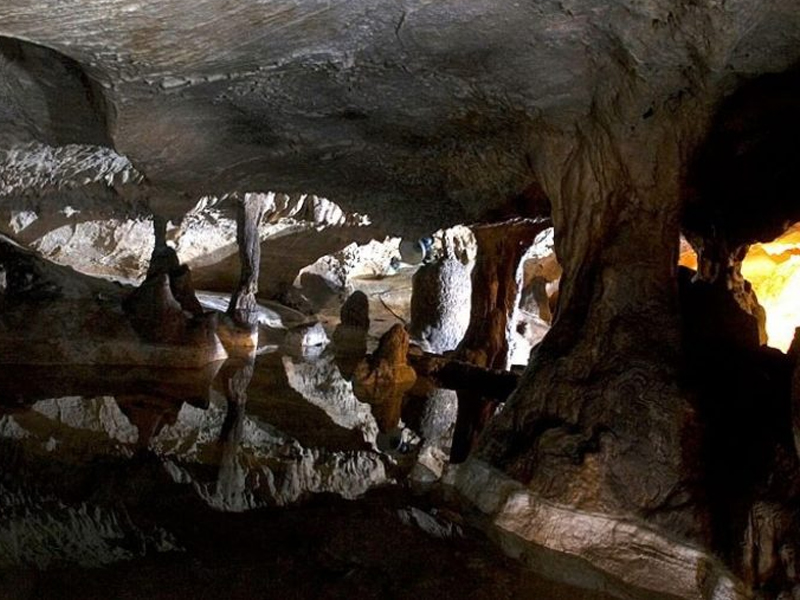
How many rooms does Karaftu Cave have
The exact number of rooms and corridors is not known, but you can easily connect to other floors from the first floor through the corridors and passageways.
The most remarkable part of Karaftu Cave is the third floor, where the craftsmanship and creativity applied to the architecture of the rooms, windows, and skylights have elevated its value and position compared to the other floors.
Upon entering one of the rooms on the third floor, you will see a damaged Greek inscription on the entrance door. The inscription mentions the goddess Hercules and states, “This is the house of Hercules; whoever enters is safe.”
How to explore all the areas of the cave?
Upon entering the cave, you will realize that to visit all the areas, you need to board a boat. As you might have guessed, there is still water in the cave, and as you pass along its walls, you will see various beautiful paintings that will awaken your artistic senses.
Another relic, “Khanikoff, the Russian Orientalist,” is visible on the walls of the connecting corridor between the first and second floors, indicating their visit in 1917 AD.
Naming the Cave
The cave of Karaftu, due to its discovery in a Kurdish region, should be searched for its Kurdish roots. This cave was known as Qal’eh Karaftu or Qal’eh Lay Karaftu among the people of the region, and even the root “Karaftu ” means taken and conquered.
Researchers studying the name of the Karaftu cave found that it is derived from the combination of two parts: “Karf” or “Karft,” meaning praise, and the other part “Tu,” meaning the sun. In combination, it means the sanctuary of the sun.
It appears that the Karaftu cave was known as one of the temples of sun worship in this region.
As we examine the name and meaning of the cave, it indicates the importance and value of this cave from ancient times to the present day.
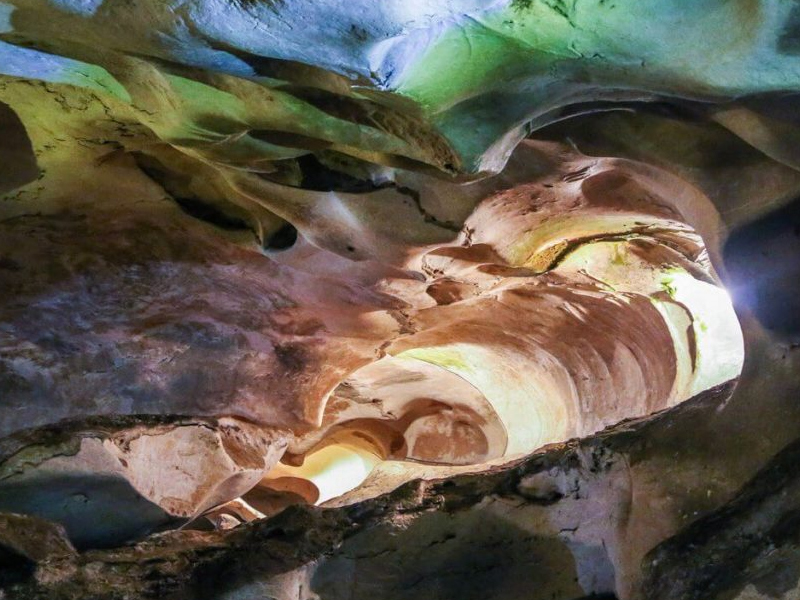
Natural Section of Karaftu Cave
In the natural section of the Karaftu cave, researchers have found that it dates back approximately 250 million years, during the Mesozoic era when more than half of the Earth’s surface was covered by water. This cave was hidden underwater and emerged from beneath the water to showcase its grandeur and beauty.
In terms of its geological classification, this cave is limestone and natural, and due to this characteristic, its ceiling and walls have beautiful curves and arches. It was likely formed during the third geological period. Throughout the year, it attracts numerous domestic and international enthusiasts, and for this reason, it has been registered as No. 330 in the list of national treasures of Iran.
Artificial Section of Karaftu Cave
In the artificial or non-natural section of the cave, we find the rooms and corridors that have been carved out on four levels.
It can confidently be said that compared to the natural beauty of the Karaftu cave, these artificial passages and extraordinary carvings have added double the charm and beauty to this place, especially the ceilings of the rooms that resemble stone arches.
Beautiful images of deer, ibex, and horses are depicted on the walls. The petroglyphs of the deer on the second floor are older than the remaining ancient patterns.
Facilities of Karaftu Cave
When you travel to the Karaftu cave, at first glance, you might think of a dark and cold cave with no access to food. Fortunately, your imagination is wrong because this cave has all kinds of facilities such as parking, toilets, interior lighting through electricity, seating platforms for visitors’ rest, and food stores.
Upon entering the Karaftu cave, you will be provided with an entrance guide on the floors.
As we mentioned, with these amenities, you will experience peace of mind in this cave, but at the same time, you should be prepared for the worst conditions. Since the cave’s lighting system relies on electrical wiring, there is a possibility of a power outage. Therefore, having a flashlight will be essential. However, it must be acknowledged that exploring under such conditions in the cave also has its own special attractions.
Also, despite the presence of large stores for obtaining food and drinking water, it is better to carry drinking water with you, especially during the hot season, as you may feel more thirsty inside the cave.
Another important thing to consider is that there are no trees or shaded areas outside the cave, so it is advisable to have sunscreen, a hat, and sunglasses with you.
Route to Karaftu Cave
To reach the beautiful and remarkable Karaftu Cave, you just need to travel to Kurdistan Province and head towards Divandareh County. Then, follow the Divandareh-Saqez road and continue on the Takab and Iran Khav routes.
Along this route, you will reach a region called Gur Baba Ali. In this direction, you will be guided towards the road to Karaftu Cave. If you find yourself on this road, you need to pass through the village of Yuzbashi Kandi to reach your main destination, Karaftu Cave.
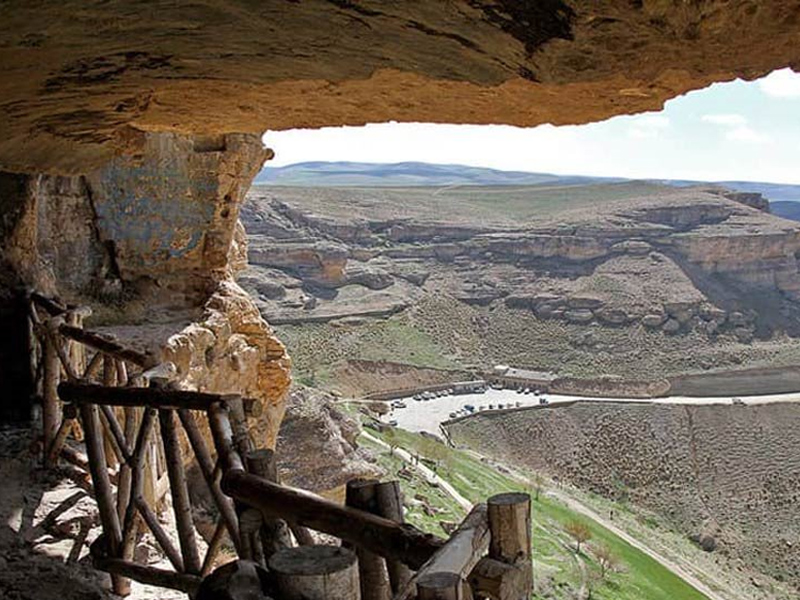
Visiting Days for Karaftu
The good news is that the cave is open for visits every day from 8 am to 5 pm, and you can spend one to two hours exploring this beautiful cave.
Restoration of Karaftu Cave
One of the prominent operations for the restoration of this national treasure was carried out in 1378 (1999-2000) by the Cultural Heritage, Handicrafts, and Tourism Organization of Kurdistan Province. The restoration included exploration and research activities in the cave, excavation and soil removal in the initial sections of the cave, as well as continued electrical installation and lighting in the interior part of the cave up to the end of the vertebrate column, which is approximately 750 meters long. Stone steps were also constructed to enhance the comfort of tourists, along with the installation of metal stairs in the outer area of the cave to facilitate the movement of tourists and visitors.
Final words
Karaftu Cave stands as a mesmerizing natural wonder and cultural treasure in the Kurdistan Province. Its geological formation dating back millions of years, combined with the intricate artificial passages and carvings, create a captivating blend of beauty and history. Exploring the cave is made convenient with the presence of facilities such as parking, rest areas, and food stores. However, it is advisable to come prepared with essentials like flashlights and drinking water, as well as sun protection due to the lack of shaded areas outside the cave.
FAQ
1- How old is Karaftu Cave and what is its historical significance?
Karaftu Cave is estimated to be around 65 million years old, making it a significant archaeological site. It has served as a shelter for various human civilizations throughout history and holds evidence of early human habitation, including artifacts and cave paintings. The cave provides valuable insights into the ancient human cultures that once thrived in the region.
2- Is Karaftu Cave suitable for visitors of all ages and physical abilities?
Yes, Karaftu Cave is suitable for visitors of various age groups and physical abilities. The cave has been equipped with stone steps and metal stairs in certain areas to facilitate movement and ensure the comfort of visitors. However, it’s important to note that some sections may require moderate physical exertion, so it’s advisable to assess your capabilities and consult with the cave staff if you have any concerns.
3- Are guided tours available in Karaftu Cave?
Yes, guided tours are available in Karaftu Cave. Upon entering the cave, visitors will be provided with an entrance guide who will accompany them throughout the tour, providing information about the cave’s geological formations, historical significance, and points of interest. The guides are knowledgeable and experienced, ensuring a comprehensive and engaging experience for visitors.
